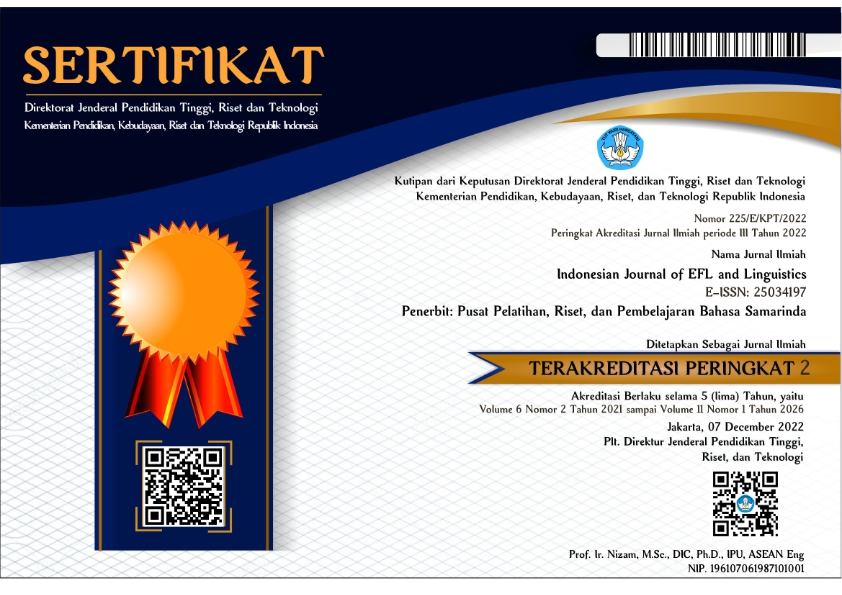Exploring Negative Judgment Language in Indonesian Conversational Language on Facebook: An Appraisal Analysis
Abstract
This research examines the use of negative judgment expressions within the framework of appraisal theory across four Facebook fan pages: Kata Kita (KK), Media Oposisi (MO), Mak Lambe Turah (LT), and Rakyat Oposisi (RO). The methods employed are discourse analysis and quantitative content analysis. Discourse analysis focusing on appraisal analysis is used to explore the evaluative language used in these social media accounts. Findings indicate a prevalent tendency for implicit judgment, with each clause element serving as a potential marker of negative judgment. In the dimension of Engagement, pronouncement expressions are not limited to reported speech; instead, they are often marked by specific lexical elements, including -lah, mah, -nih, -loh, among others. Furthermore, in terms of graduation, these pages employ pragmatic meaning repetition in addition to lexical and semantic repetition. These results suggest that Indonesian evaluative language possesses distinctive characteristics that diverge from English evaluative language, as outlined in Martin and White`s appraisal theory. Quantitative content analysis is used to examine the comparison of patterns or tendencies in the use of evaluative language across Facebook accounts. This study contributes to a deeper understanding of cultural distinctions in the evaluative language styles found in social media discourse.
Copyright (c) 2025 Indonesian Journal of EFL and Linguistics

This work is licensed under a Creative Commons Attribution-NonCommercial-ShareAlike 4.0 International License.




